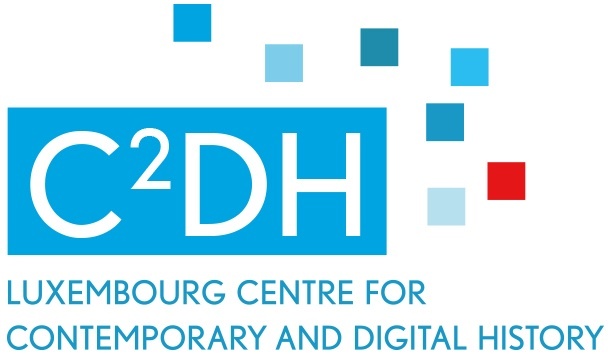Hi Sam, you had to come back early in March from a research fellowship at the University of Kiel. What were your original plans there?
Hi, yes, unfortunately my fellowship was cut short. I had planned to do research on comparative Germanic linguistics and onomastics. The Christian-Albrechts-Universität Kiel has very well stocked libraries on these topics. One focal point in research at the university is onomastics, German dialects, Frisian and Lower German. The fellowship was meant to be split into three parts: research, thesis writing, and presentation of my research at the Institute for Scandinavian Studies, Frisian Studies and General Linguistics. I was able to start writing parts of my thesis, but I could not finish all the research I wanted to do because of a lack of time. The presentation of my research has been postponed to the autumn, if possible. Owing to the unforeseen circumstances, I was invited to pursue my research at CAU in Kiel at a later, safer, stage.

Why is the exchange with Kiel important for a researcher in Luxembourgish toponymy?
As I a historical linguist I use toponymy as the only quantitatively viable data. It can give indications about the near history of the Luxembourgish language. The exchange with Kiel enables me to perform comparative research on the toponymy of Luxembourgish and other closely related Germanic varieties. For this highly specialised field of research, materials are very scarce. Relevant journals, monographs, dictionaries and theses are often difficult to find and excluded from international loans (this is the case with dictionaries for example).
What are the connections between Luxembourgish toponymy and languages such as Frisian and Lower German? Is the case of Luxembourgish particularly interesting for linguists of northern German dialects?
The main connection is a close genetic relationship (in a linguistic sense). Luxembourgish is part of the family known as the Middle German languages, situated somewhere between High German and Low German. However, it is also a language at the western periphery of Romance languages, such as Parisian French or Walloon. These links between Low German, Frisian, Dutch (or Flemish) and Luxembourgish have not been looked at in depth because of the lack of historical linguistic studies on Luxembourgish. Furthermore, standard High German has had (and continues to have) a considerable influence on the Luxembourgish language. This results in many similarities between Luxembourgish and German that are actually loans from German. By performing linguistic comparisons, such relationships reveal themselves.
Can you briefly explain what “toponymy” means? Do you have an example?
The term toponymy designates the name that is given to a place, for example any village name or the name Esch-sur-Alzette, which designates a town in the south of Luxembourg. The names of villages, towns and cities are known as macro-toponyms, meaning names of macrostructures or relatively large places. In contrast, my research focuses on micro-toponyms. This category is for place names that do not come under the village or town/city category. It mostly designates small spaces in rural areas. There are many more instances of micro-toponyms than macro-toponyms. To give you an idea, Luxembourg has about 500 villages, towns, cities or village-like structures, whereas my corpus of micro-toponyms encompasses over 200 000 instances. The corpus collects a maximum of possible names and their variants, but it is nevertheless safe to assume that these 200 000 instances refer to at least 40 000 places inside the modern Grand Duchy of Luxembourg as we know it today.
How do you map the toponymic landscape of Luxembourg? How do you derive your data?
In rare cases, I use GIS software to show the distribution of specific name complexes, but mostly I focus on the pure linguistic information obtained from these names. Much of my data is open source and comes from the national land registries. Some of it is archival data, which I transcribed myself, and some of it comes from collections that were kindly made available to me by various institutions.
What do you want to find out with your PhD research?
I am investigating the history of the Luxembourgish language. In doing so I focus on modern Luxembourgish as a reference point and try to go back as far as possible by using toponymic data. Place names tend to be archaic while also being closely linked to rural spaces. This makes them an ideal data source for any research on language development, especially if there are no written testimonies in that language prior to a given time period, as is the case for Luxembourgish. The main goal is to investigate any possible and plausible linguistic developments that can be attested to by toponymic data. I also focus on names as a specific method of language use.
What are the next steps in your research?
I am mostly writing up my first results and comparing them to any other relatable language varieties to discern comparative developments. I also need to do further data interpretations, but for this I need access to library materials. With my trip to Kiel cut short and the national libraries in Luxembourg currently closed, this is a problem. Unfortunately not everything can be obtained digitally. Accessible material is mostly digitised by big publishing houses who sell their licences to libraries. Smaller libraries, and also local and specialised journals, are often not part of this system. I have already amended my research plan as much as possible, but I am waiting at least for the international loan system to be operational again.
I was also planning to go to various conferences, which have either been cancelled or postponed to an unknown date. So I will have to wait until academic exchanges at specialised conferences become possible again.
Review by Sarah Cooper


